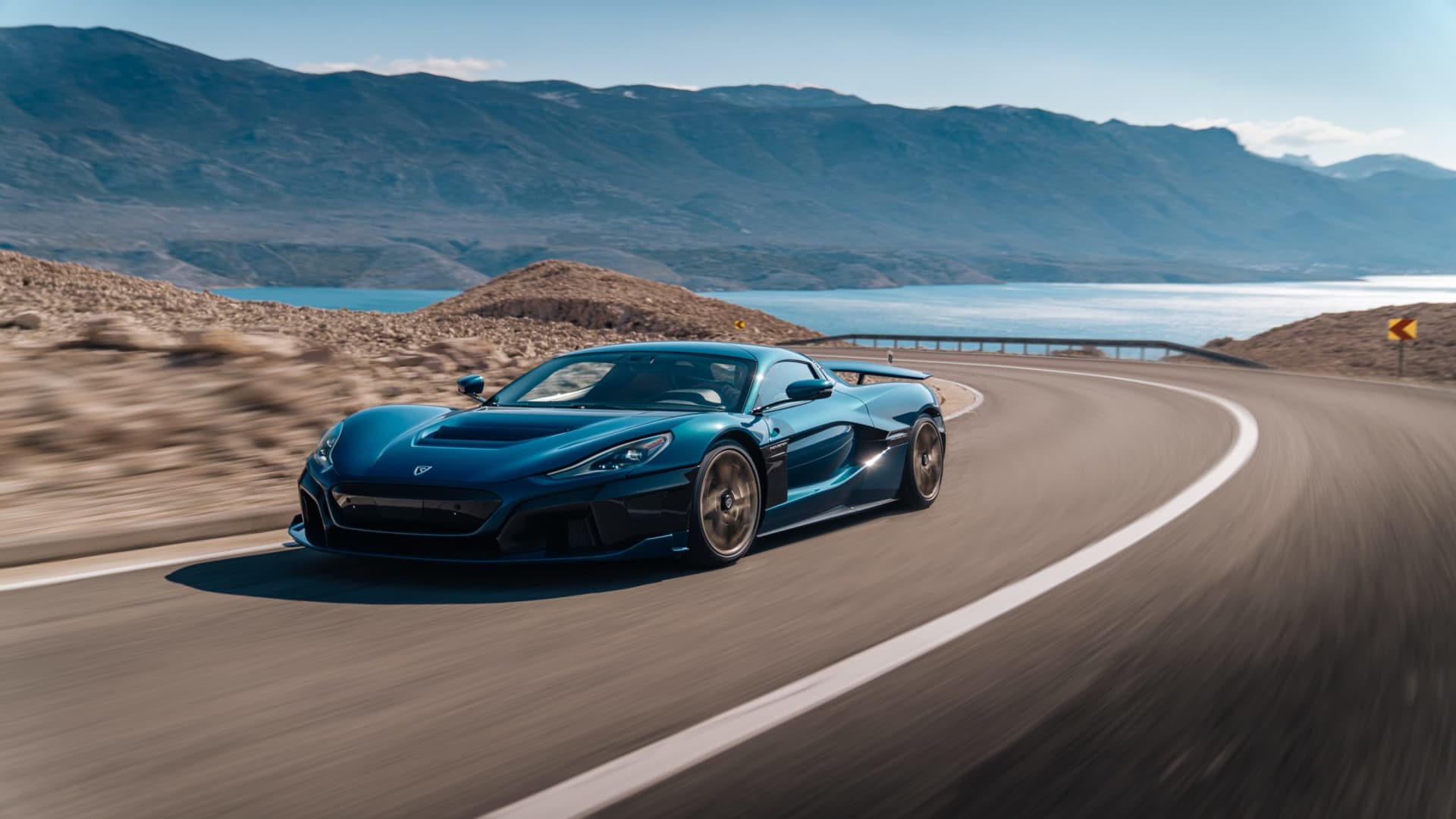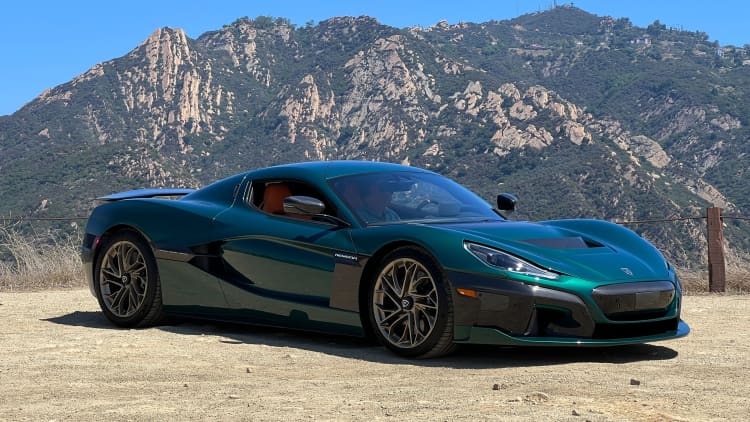

MALIBU, California – The most amazing thing about the $2.1 million Rimac Nevera is how easy it is to just get in and drive.
The Nevera is an electric hypercar from Croatia. It sits low — very low — to the ground, and at first glance it looks like the simple act of getting into it could be complicated. But the doors, which lift up and out sort of like a Lamborghini’s, cut into the roof just enough to ensure that I don’t bump my head as I drop myself into the driver’s seat.
Getting underway does take a little bit of learning. Gears are shifted with a big knob to the left of the steering wheel, the power seat’s adjustments are hidden in a touchscreen, and switches for the turn signals and headlights are mounted directly on the steering wheel. But once you’ve got that down, it’s simple to operate.
The whole car is like that — simple to operate — its 1,914 horsepower notwithstanding.
One of the first things I noticed as we got underway is that it’s easy to see out of the Nevera. That’s not a given with cars like this. For example, in Ferraris and Lamborghinis and other low-slung highway rockets, it’s often a challenge to see what’s behind you. But while the Nevera is definitely low slung, there’s just enough of a rear window to make it easy to drive in highway traffic. Good side mirrors certainly help with that.
There’s also just enough mechanical noise to remind you that you’re in a hypercar. There may not be an engine, but there are four electric motors and they make mellifluous mechanical sounds as the car moves down the road. Not so loud that I couldn’t converse with my passenger, Rimac’s Ryan Lanteigne, in a reasonable talking voice. It is just loud enough to remind us that we’re driving in something special.
And the Nevera is very special indeed — as it should be for its just over $2 million asking price. You’ll see why in the video.
The Rimac story
Rimac — pronounced REE-mahtz, roughly — is Croatia’s first and only automaker. Its 35-year-old founder, Mate (MAH-ta) Rimac, started tinkering with electric vehicles after he blew the engine in an old BMW he raced as a teenager. After rebuilding it with an electric drivetrain — and winning some races, besides — he founded Rimac Automobili in 2009, hoping to one day build an electric supercar in his home country.
Although Rimac the company’s first years were a struggle, Mate’s timing turned out to be excellent in retrospect, with automakers around the world moving to electrify their fleets.
Rimac’s early prototypes were impressive enough to attract significant investments from Hyundai and Porsche, and it raised another 500 million euros (or about $534 million) last year. Those served as the foundation of what is now a thriving business consulting to traditional automakers eager to build high-performance EVs. Aston Martin and Swedish supercar maker Koenigsegg are among Rimac’s clients, along with a number of others that the company says it can’t yet disclose.
The Nevera is named for the fierce summer storms that roll into Croatia from the Adriatic Sea. (Rimac employees like to say that neveras — the storms — are “extremely powerful and charged by lightning,” just like their car.)
The Nevera (the car) serves both as a rolling display of Rimac’s EV expertise and as the supercar that Mate Rimac has long dreamed of building. It’s a four-motor design — one for each wheel — with a 120 kilowatt-hour battery pack, enough for about 300 miles of range under normal driving conditions.
Four motors and a cravat
But there’s nothing normal about the Nevera’s power output. Those four motors give it a total of 1,914 horsepower, and 2,360 newton-meters of torque — enough for a top speed of 258 miles per hour. Zero to 60 miles per hour takes just 1.74 seconds, according to Rimac.
I didn’t verify that time with any great accuracy, but I can attest that such a power thrust is plausible. As friendly as it is to drive in traffic, the Nevera is almost unbelievably quick when fully uncorked. But it never feels uncontrollable, and that’s a significant engineering achievement.
Even more impressive, albeit more subtle, is the way those four motors work together. The car’s systems adjust each motor’s power output 100 times a second to ensure optimum handling moment to moment. Or, put another way, the Nevera blasts through and out of tight corners without hesitation. That’s a trick that other supercars can only emulate with braking.
It’s an even more impressive trick given the car’s weight, around 5,100 pounds. But as hard as it might be to believe, that weight is so well packaged, with the batteries mounted low and close to the Nevera’s center, that it’s hardly noticeable. (Of course, the tremendous power on tap helps.)
It’s a good-looking car, too, low and radical but not over the top. Civilized. It’s well-made, with flawless carbon fiber on the outside and comfortable leather throughout the interior. Croatia doesn’t have a tradition of car making, but the Nevera does reflect some national pride: In addition to the car’s name, the intakes on its sides are styled to resemble a cravat, the ancestor of the modern necktie — a Croatian invention dating to the 16th century.
The Nevera starts at 2 million euros, or just over $2.1 million. If that’s in your price range, speak up soon. Rimac says it plans to build just 150 of them.







